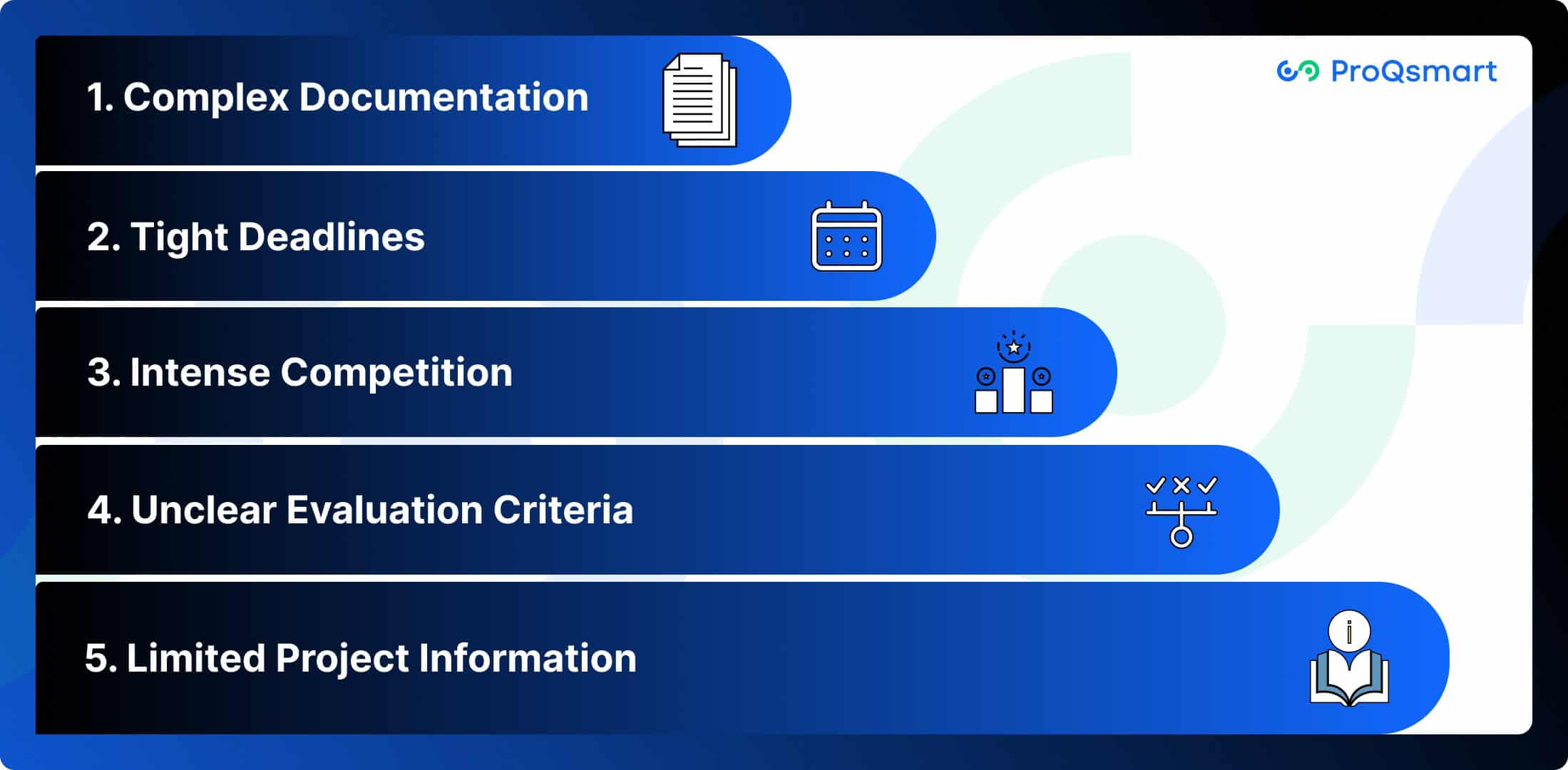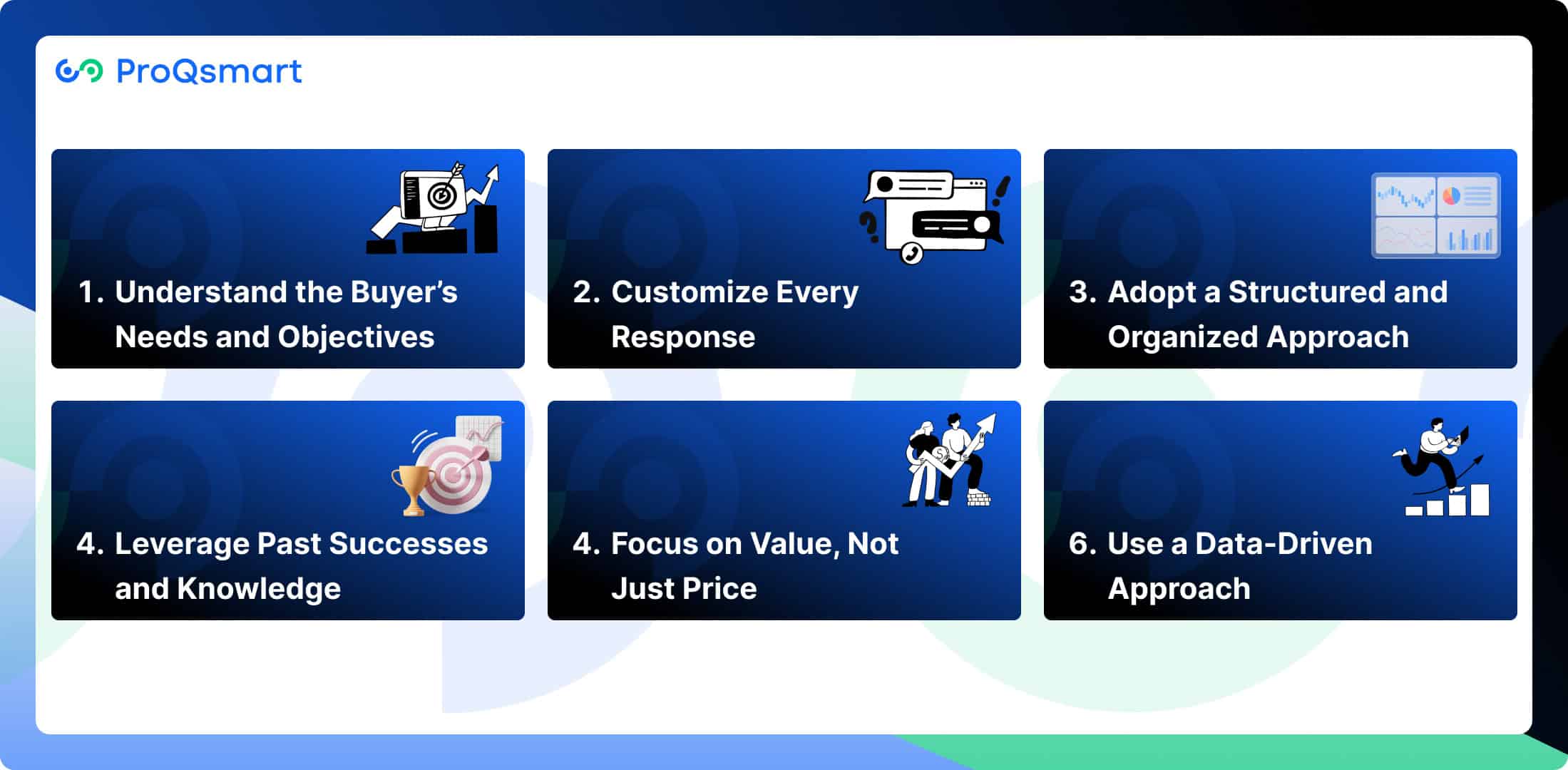Competitive tendering is not just about inviting bids or ensuring transparency—it is a strategic process that requires careful planning, attention to detail, and a deep understanding of client needs.
For vendors, mastering this process is crucial. By understanding the nuances of tendering, they can craft proposals that align precisely with project requirements, highlighting their unique strengths and differentiating themselves from competitors. This approach not only increases their chances of winning contracts but also helps build trust and long-term partnerships with clients.
In a highly competitive market, excelling in tendering is essential. It also vendors to secure consistent work, demonstrate their capabilities, and position themselves for sustained growth and success.
How to Navigate Competitive Tendering in Procurement
Competitive tendering is a procurement strategy that opens a project to bids by qualified suppliers or contractors. It significantly provides transparency and ensures that all potential suppliers have an equal opportunity to submit their best proposals. This is how a level playing field is created and trust and integrity in procurement practices is developed.
When it comes to delivering value for money, competitive tendering remains one of the most effective weapons in the arsenal. When you incentivize for multiple bids, procurement professionals can consider several different options, comparing costs, quality, and service offerings side by side.
This process leads to deep cost savings. It additionally drives innovation among suppliers, forcing them to develop the most innovative solutions to win contracts. A clearly written Invitation to Tender (ITT) or Request for Proposal (RFP) draws a competitive range of bids.
This ultimately allows buyers to get the most advantageous price and quality. Competitive tendering does other things – it creates a healthy competition between suppliers. The future possibility of winning a contract incentivizes providers to build capacity and bring better proposals to the table.
How To Make The Competitive Tendering Process More Effective

1. Preparation
Begin with thorough market research to identify potential suppliers and analyze supply chain dynamics, gaining insights into market forces and trends.
Use research findings to develop a procurement strategy that aligns with organizational priorities and project-specific objectives.
Prepare a detailed and exhaustive list of tender specifications to ensure clarity and encourage competitive, accurate bids from suppliers.
Establish a clear and realistic timeline for each stage of the tendering process to maintain progress, prevent delays, and avoid costly disruptions.
2. Tender Release
Tender documents, defining the project scope, parameters and delivery method, require careful drafting and release. Making sure these documents are available and understandable to all suppliers who are interested is key to creating competition.
Using multiple channels to advertise tenders can help them cast a bigger net and attract more competitive bidders. To keep order, establishing a firm cutoff date for bids is essential.
3. Bid Submission
It’s vital to require bidders to submit bids in a common format, easing side-by-side comparison. Providing space for suppliers to share relevant information about their experience, expertise, and history of performance helps us determine best fit.
Monitoring the submission process ensures adherence to guidelines and deadlines, while maintaining confidentiality protects sensitive information throughout this phase.
4. Evaluation
A fair and competitive evaluation process can’t exist without clear criteria established beforehand to score bids against each other. Bringing together a diverse evaluation team helps facilitate a balanced approach, and also scoring methodologies help provide a way to quantify the strengths and weaknesses of each bid.
Providing debriefing to unsuccessful bidders encourages transparency and an opportunity to improve.
5. Contract Award
The final step in the competitive tendering process involves formalizing the contract with the selected supplier, based on the evaluation results. This stage requires clearly documenting all terms, conditions, and as well as expectations to prevent misunderstandings and ensure alignment between both parties. A well-defined agreement establishes a strong foundation for a transparent and productive partnership, fostering trust and collaboration. Additionally, the contract should mitigate risks by detailing deliverables, timelines, and responsibilities, ensuring clarity and accountability throughout the collaboration. This comprehensive approach correspondingly helps safeguard the project’s success and strengthens the relationship between the organization and the supplier.
Key Challenges in Competitive Tendering

1. Complex Documentation
Managing large volumes of documents is a critical yet challenging aspect of tendering, requiring meticulous attention to detail.
Proposals often involve thousands of documents, making it essential to use templates, checklists, and clear instructions to simplify the process.
Incomplete or inconsistent information can lead to errors, emphasizing the need for thorough guidance and support for bidders.
2. Tight Deadlines
Unrealistic timelines often force suppliers to compromise on the quality of their bids, creating a trade-off between speed and precision.
Setting reasonable schedules and maintaining open communication can help suppliers deliver higher-quality submissions.
Flexibility to adapt to unexpected challenges is crucial to keeping the process efficient and on track.
3. Intense Competition
High competition drives innovation and cost-effectiveness but can also lead to aggressive low-bidding, risking quality and project outcomes.
Bidders must differentiate their proposals with unique value propositions while maintaining realistic pricing.
Encouraging collaboration among suppliers can foster innovation and create a more balanced competitive environment.
4. Unclear Evaluation Criteria
- Ambiguous or poorly defined evaluation criteria can result in misunderstandings, disputes, or even legal challenges.
- Clear, measurable, and transparent evaluation standards are essential to ensure fairness and consistency.
- Regular training for evaluators and updating criteria to reflect current market conditions can enhance objectivity and alignment with project goals.
5. Limited Project Information
- Incomplete or unclear project details can deter bidders from submitting competitive or accurate proposals.
- Pre-tender meetings and open communication between buyers and suppliers help clarify expectations and address uncertainties.
- Documenting all communications ensures transparency and accountability, reducing the risk of misinterpretation.
Strategies for Success in Competitive Tendering
Competitive tendering is a complex and highly competitive process that demands a well thought out strategy and proactive approach. Below are key strategies to help you stay ahead and increase your chances of success.
Anticipate Upcoming Opportunities
To remain competitive, it’s essential to predict and prepare for future tenders. Start by developing a robust system to track relevant opportunities within your industry. Analyze historical data to identify trends and patterns that can help you anticipate upcoming projects. Building strong relationships with contracting authorities can also provide valuable insights into future opportunities. Additionally, leverage technology tools to set up automated alerts, ensuring you never miss a potential bid. Besides, by staying informed and prepared, you can position yourself as a strong contender from the outset.
Implement Rigorous Pre-Qualification Processes
A thorough pre-qualification process is critical to narrowing down the field of bidders and ensuring their credibility. Use detailed questionnaires to gather essential information about bidders’ capabilities, experience, and suitability for the project. Establish clear and well-defined criteria that align with the project’s scope and risk level. Thus, this approach not only helps you identify the most qualified bidders but also ensures transparency and fairness. Clearly communicate the outcomes of the pre-qualification process to all participants, fostering trust and as well as maintaining a level playing field.
Understand Tender Conditions Thoroughly
Accurately interpreting tender documents is crucial to submitting a compliant and competitive bid. Break down complex documents into manageable sections, focusing on the most critical aspects first. Share examples of successful past interpretations to guide your team and reduce confusion. Encourage bidders to seek clarification on any unclear issues early in the process to avoid misunderstandings later. Besides, by ensuring a clear understanding of the tender conditions, you can minimize errors and improve the quality of your submission.
Maximize Efficiency Through Strategic Planning
Efficiency is key to managing the tendering process effectively. Develop a comprehensive execution plan that outlines each phase of the process, including timelines, methodologies, and team responsibilities. Use project management tools to track progress and maintain momentum. Schedule regular check-ins to ensure transparent communication and address any challenges promptly. A well-structured plan not only enhances productivity but also ensures accountability and alignment across the team.
Craft a Compelling and Professional Proposal
Your proposal is your opportunity to stand out from the competition. Clearly highlight your unique value proposition and address the buyer’s specific pain points. Use relevant third-party case studies or testimonials to build credibility and demonstrate your expertise. Pay attention to the presentation of your proposal, ensuring it is visually appealing, well-organized, and professional. A polished and persuasive proposal can make a lasting impression on evaluators and significantly improve your chances of success.
To further facilitate this process, consider utilizing ProQsmart, which offers comprehensive tools designed to enhance proposal development and streamline procurement efforts.
Maintain Clear and Transparent Communication
Effective communication is essential throughout the tendering process. Document all interactions with procurers to avoid misunderstandings and ensure accountability. Be proactive in addressing any issues or clarifications, and also maintain transparency in your communications. By fostering open and honest dialogue, you can eventually build trust with stakeholders, as well as minimize the risk of process interruptions.
How to Write Winning Bids in Procurement

In competitive tendering, writing a winning bid is not just about submitting a proposal—it’s about demonstrating your ability to meet the buyer’s needs better than your competitors. A well-crafted bid can set you apart, showcase your value, and increase your chances of securing lucrative contracts. Below are the best practices to help you craft compelling, value-driven bids that stand out in a competitive environment.
1. Understand the Buyer’s Needs and Objectives
To write a winning bid, you must first thoroughly understand the buyer’s requirements, priorities, and pain points. Carefully analyze the tender documents, paying close attention to the evaluation criteria and project objectives. Tailor your response to demonstrate how your solution aligns with their goals and also addresses their specific challenges. By showing that you understand their needs, you can also position your proposal as the most relevant and valuable option.
2. Customize Every Response
Avoid using generic, one-size-fits-all responses. Each tender is unique, and your bid should reflect a deep understanding of the client’s specific requirements. Use the buyer’s language and terminology to show that you are familiar with their industry and challenges. Customizing your response not only makes your bid more compelling but also demonstrates your commitment to meeting their needs.
3. Adopt a Structured and Organized Approach
A well-structured bid is easier for evaluators to read and understand. Use clear headings, subheadings, and a logical flow to organize your response. Break down complex questions into smaller, manageable sections to ensure clarity and as well as precision. Moreover, a structured approach not only enhances readability but also reflects your professionalism and attention to detail.
4. Leverage Past Successes and Knowledge
Maintain a repository of past responses, case studies, and testimonials to streamline the bid-writing process. Reference successful projects or solutions that are similar to the current tender to demonstrate your expertise and track record. Regularly update this repository to ensure the information remains relevant and accurate. Leveraging past successes can definitely strengthen your credibility and also provide evidence of your ability to deliver results.
5. Focus on Value, Not Just Price
While price is an important factor, buyers are often more interested in the value your solution provides. Highlight your unique value proposition, emphasizing how your offering solves the buyer’s problems and delivers measurable benefits. Use data, metrics, and third-party evidence to support your claims and also build trust. Besides, by focusing on value, you can also differentiate yourself from competitors who may rely solely on low pricing.
6. Use a Data-Driven Approach
Leverage bid management tools and analytics to track your performance and identify trends. Analyze both successful and unsuccessful bids to understand what works and what doesn’t. Use this data to continuously improve your bid-writing process and optimize your approach. Moreover, a data-driven strategy ensures that your bids are consistently aligned with buyer expectations and market trends. ProQsmart enhances this process with features like performance analytics, which tracks bid outcomes and identifies patterns to optimize future proposals. ProQsmart’s content insights allow you to analyze which responses are most effective and reuse high-performing content. Additionally, real-time collaboration ensures data-driven decisions are made efficiently and accurately. By using ProQsmart, you can align your bids with buyer expectations and market trends, ensuring a smarter, more strategic approach to tendering.
Post-Submission Strategies for Competitive Tendering
The tendering process extends beyond bid submission, and effective post-submission strategies can significantly influence outcomes and foster long-term relationships. Here are key approaches to maximize opportunities after submitting your bid:
1. Maintain Proactive Communication
Following submission, initiate follow-up communication with the buyer to reaffirm your interest and commitment to the project. A brief email or call can reinforce your dedication and keep your organization top of mind. This demonstrates professionalism and helps build trust, positioning your firm favorably for future opportunities.
2. Request and Leverage Feedback
Regardless of the bid outcome, seek detailed feedback from evaluators to understand strengths and areas for improvement. Insights into why a bid succeeded or fell short provide actionable data to refine future proposals. For instance, if pricing was a concern, adjustments can be made to align better with buyer expectations. This iterative learning process enhances your competitiveness over time.
3. Cultivate Long-Term Relationships
Even unsuccessful bids offer opportunities to strengthen relationships with buyers. Maintain regular, meaningful communication by sharing updates about your services or extending occasional gestures of goodwill, such as seasonal greetings. These efforts ensure your firm remains a preferred partner for future projects, fostering sustained collaboration.
4. Conduct Comprehensive Bid Analysis
Evaluate both successful and unsuccessful bids to identify patterns and areas for improvement. Assess factors such as pricing strategies, proposal clarity, and alignment with buyer requirements. Regular analysis enables continuous refinement of your tendering approach, driving better outcomes and correspondingly increases your win rate.
Conclusion
By understanding the competitive tendering process, addressing its challenges, and applying the strategies and best practices outlined, you can significantly improve your chances of success. Each bid is a chance to showcase your capabilities, deliver value, and build strong relationships with buyers.
To enhance your tendering efforts, consider using e-tendering platforms/software. For instance, ProQsmart simplifies bid management, helping you organize content, track performance, and refine proposals effectively. With ProQsmart, you can also navigate the complexities of tendering with ease, ensuring your submissions are competitive and aligned with buyer expectations.
Winning bids requires more than just participation—it demands a strategic approach and continuous improvement. By leveraging ProQsmart, you can streamline your processes, reduce inefficiencies, and focus on creating compelling proposals that stand out. Book a demo today!



